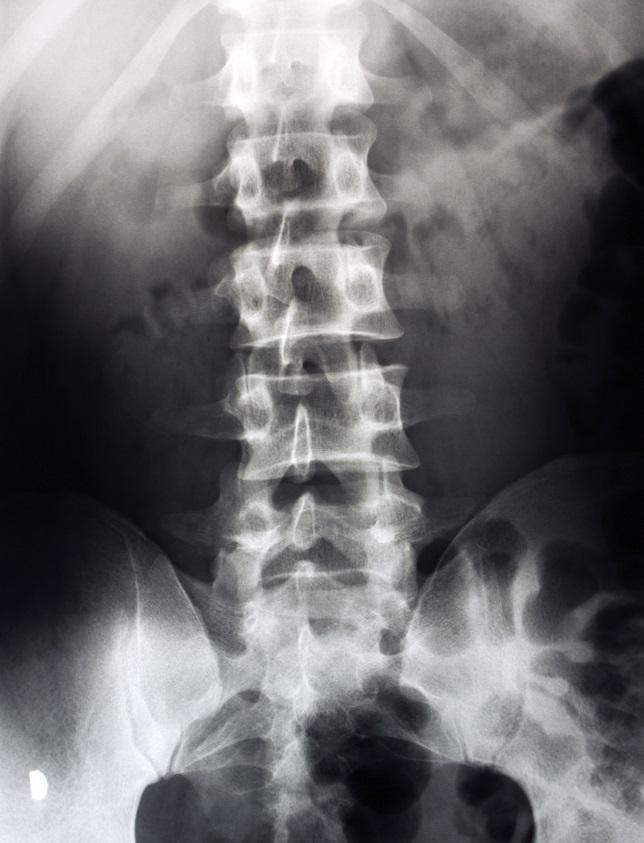The lumbar spine consists of 5 highly moveable vertebrae which are labeled L1 through L5 from top to bottom. The vertebrae consist of a cylindrical body and several protruding spinous processes, including lateral spinous processes and a transverse spinous process. These processes have a joint on them that connects to the joint beneath them. The cylindrical vertebral bodies are protected from one another with soft discs made of gelatinous material cushioning the discs. A picture of the lumbar vertebrae is shown below:
The spinal disc is a gelatinous cushion that protects the vertebral bodies from rubbing against one another. Behind the spinal cord, there are two facet joints that are created from the spinous processes in the back and side of the vertebral bodies. There is also a connection at the back, where the transverse process is. These connections allow for smooth movement of the spine.
There are three functional aspects to the lumbar vertebrae. These include the following:
- The vertebral body, which bears the bulk of the weight.
- The neural arch which protects the nervous system elements.
- The spinous and transverse processes which increase the efficiency of the spinal muscles
Unlike the thoracic vertebral bodies, the lumbar vertebral bodies have no rib facets to accommodate ribs. The vertebral bodies of the lumbar spine are the heaviest and strongest to take up the weight of the body. The size of the lumbar vertebral disc increases from L1 to L5. This is because the lower vertebral bodies have a greater weight to bear.

